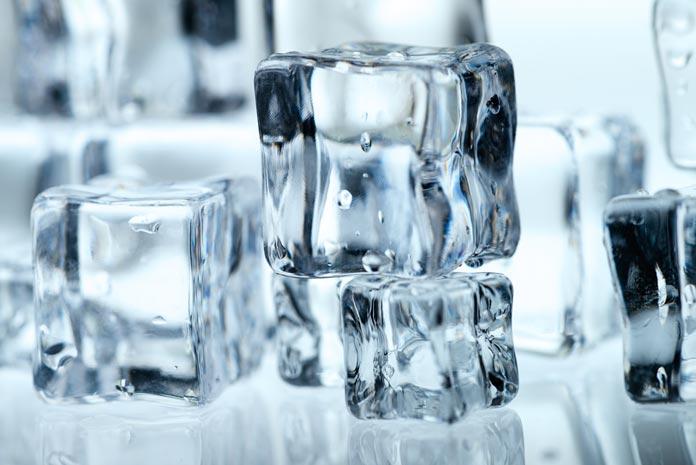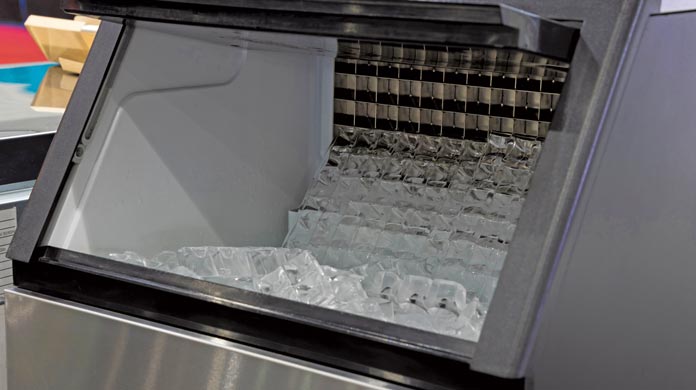
Article contributed by Easy Ice
The simple fact is, without proper ice machine cleaning, your restaurant’s ice maker is at risk from mold, slime, scale, and sediment.
Biological contaminants like mold and slime can lead to damaging health code violations.
Scale and sediment can damage vital ice machine components, which will lead to expensive repairs.
Below are some of the most common substances that could be lurking in your restaurant’s ice machine – and what you can do to eliminate them before they hurt your business.
1. Mold and Slime
Slime and mold form because ice machines provide a damp and dark environment where they can thrive. Yeast and dust in the air provide these growths with an unlimited supply of food to continue to flourish.
Ice machines are also susceptible to other biological contaminants that are dangerous to customers, like E. Coli, Hepatitis A, and Norwalk Virus. In fact, a 2011 study from the Environmental Protection Agency focused on Las Vegas restaurants found that 72.2 percent of ice was “positive for presumptive coliform bacteria presence.”
Restaurants can clean mold, slime, and other biological contaminants from their ice machine with a few simple steps.
A weekly cleaning schedule helps tremendously to keep these containments at bay, but it is not a replacement for a professional ice machine cleaning from a qualified technician.
To clean mold and slime, mix a solution in a spray bottle of 20 percent chlorine and 80 percent water.
Instruct employees to use the spray bottle to saturate any contaminated surfaces, and if needed, wipe the areas to remove the contaminants.
After wiping, you must sanitize the area by reapplying the solution and leaving the mixture to air dry.
2. Scale
Scale is the result of mineral concentration in the water. As water flows over the ice making surface of the system, these minerals combine and cling to the ice machine.
While not dangerous to customers, scale can cause significant ice machine damage.
Calcium and magnesium, the minerals that form scale, are commonly found in areas with hard water.
The concentration of these minerals, measured by hardness, determines how fast scale forms and how frequently a system needs to be cleaned.
While scale does not present a health hazard, it will affect the reliability of your machine as well as its lifespan, which can lead to costly repairs.
In the short-term, scale will clog valves and distribution tubes, slowing down the ice-making process or disabling the machine altogether.
In the long term, scale buildup on the ice making surface (the evaporator) causes a condition called “pitting.”
Pitting happens when scale adheres so firmly to the evaporator, it tears a microscopic chunk out of the evaporator when removed.
That “pit” attracts more scale, which causes more damage during cleaning. This cycle continues, creating a deeper pit, which leads to an expensive evaporator replacement or new machine purchase.
The most severe scale condition that we observed here at Easy Ice was in southeast Ohio, where a brand-new ice maker was clogged by scale in just six days.
Luckily, there are a few treatments that can help you prevent scale buildup.
This includes treating the restaurant’s water supply with a dedicated water softener, adding a phosphate filter to the ice machine, or installing a reverse osmosis system.
These systems either treat or reduce the magnesium and calcium particles in the water, so they don’t combine to form scale.
Cleaning scale is not easy.
It requires removing ice machine components and using harsh chemicals.
You should consider hiring a qualified ice machine technician to avoid harm to you and your ice machine.

3. Sediment
Every water source has suspended particles and sediment.
Filtration by the city’s water treatment facility manages the particulate count before it leaves the treatment plant, but a network of pipes, possibly hundreds of miles long, delivers the water to your ice machine.
Some of those pipes may be old, which can flake and add particulates to the water source.
Once inside the ice machine, particulates get inside the pump, valves, float switch, etc. and can gum everything up, damaging the system.
Sediment in your water supply can also clog filters and distribution tubes that lead to smaller, malformed ice cubes.
The best way to prevent sediment includes using a dedicated water filter, which is the first line of defense for reducing particulates in the ice machine.
Be sure to install a standard sediment water filter for the ice maker. We recommend a 5-micron sediment filter on all compatible ice machines.
Sediment filters should be replaced about every few months, depending on their rating.
You may require additional water filtration methods if your business resides in a challenging environment with very high sediment content in the water.
Finally, routine preventive maintenance and ice machine cleaning will remove sediment buildup, so it won’t cause problems in the long run.
Treat Your Ice Machine Well, and It Will Serve You Well
While many factors that can cause ice machine problems, it’s important to have a plan to identify potential risks from the start. Consistently monitor your ice machine’s performance and look for instances of mold, slime, and scale within the machine.
Performance issues and the presence of contaminants won’t improve over time. Often, they lead to expensive ice machine repairs that could have been avoided with proper cleaning and maintenance.
It’s also important to routinely discuss safety standards with your employees, including ice machine care and maintenance.
Make a schedule detailing what needs to be cleaned and when, then delegate the job to specific employees who have had the proper training.
While many preventative steps can be taken in-house to avoid large buildups of mold, slime and sediment, it’s important to have a good ice machine service provider that routinely looks for the warning signs of mold, slime, and scale.























